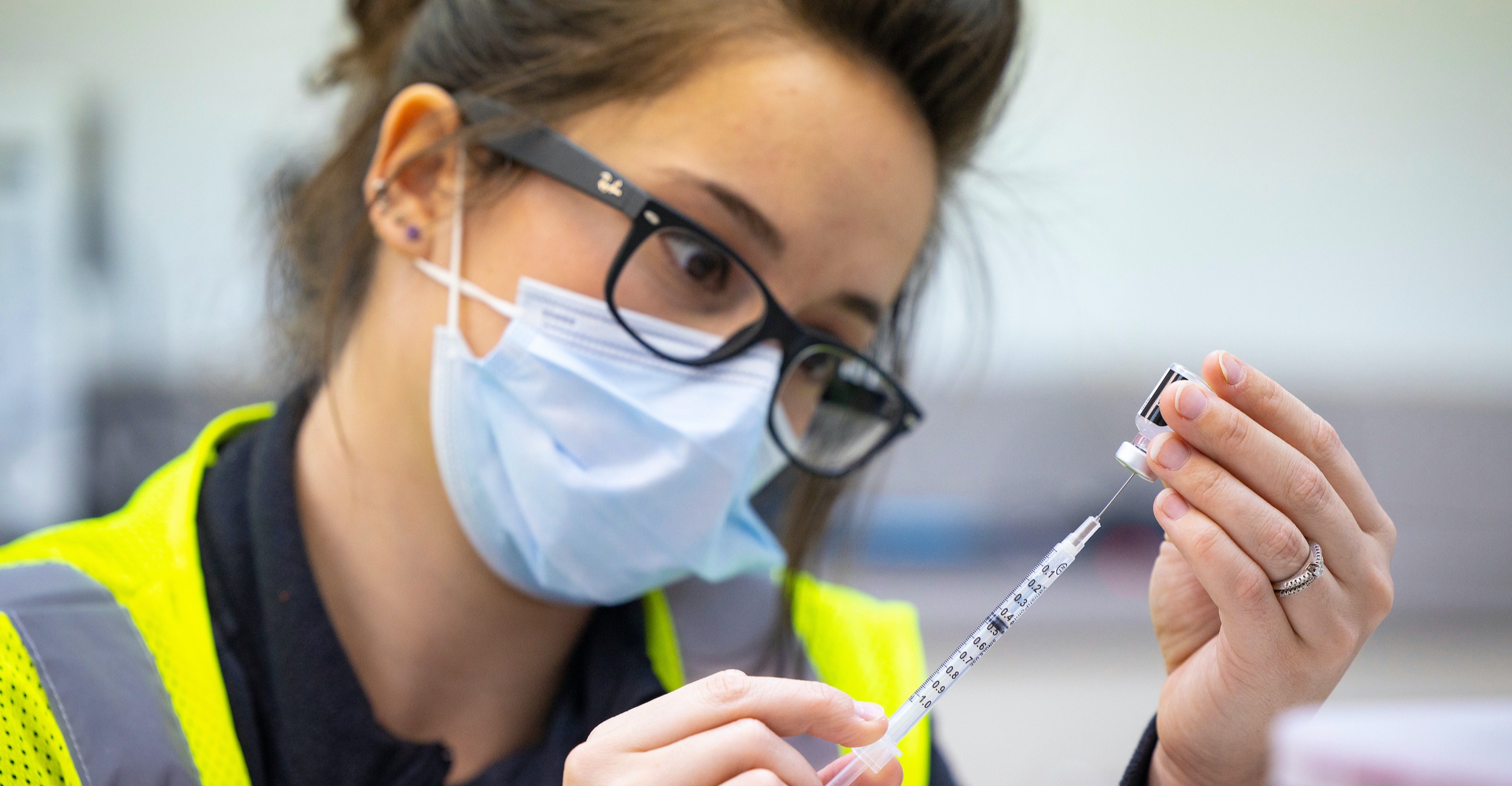
OSU physicians explain vaccine science
Wednesday, September 8, 2021
Media Contact: Gail Ellis | Communications Specialist, Copywriter | 620-515-2498 | gail.ellis@okstate.edu
Since March 2020, it’s impossible to calculate the loss of life and productivity as well as societal damage caused by COVID-19. A vaccine is the world’s best hope for preventing deaths and staffing hospitals while helping people return to work and school.
Widespread infections of severe acute respiratory syndrome (SARS), Middle East respiratory syndrome (MERS) and other coronaviruses prompted scientists to begin studying messenger Ribonucleic Acid (mRNA) vaccine technology decades ago, but the arrival of COVID rerouted all resources to achieve one common goal. Scientists and researchers united to develop a vaccine using mRNA technology.
“It’s the very first time an entire world of researchers worked together to figure this out quickly, but the concept was decades in the making,” said Kelly Murray, a doctor of pharmacy and clinical associate professor in the Department of Emergency Medicine at the Oklahoma State University Center for Health Sciences in Tulsa.
RNA is a type of molecule that all humans carry in their bodies to produce cell protein needed for biological functions. The COVID vaccine’s mRNA technology is distributed via a lipid vehicle, which helps the protein enter the cells of the body more easily. The vaccine is injected into a person’s arm and goes to work sharing the message with the body’s cells to identify and fight the CoV-2 virus.
The mRNA vaccine is an instruction manual that teaches cells how to recognize the spike protein that lives on the outside of the CoV-2 virus. The mRNA administered by vaccines does not enter a cell’s nucleus or alter DNA.
“Once your body learns what the spike protein looks like, it’s able to metabolize the vaccine and get rid of it,” Murray said. “The vaccine’s main job is to provide your body with instructions on how to recognize the virus once a person comes in contact with it again.”
For the next two weeks, a person’s body will continue sharing the mRNA instruction manual with cells until all have received the message. The strongest immune system response typically occurs 12 to 36 hours after vaccination.
“Those symptoms you feel, like a cold or the flu, are the result of your immune system kicking on and practicing how it’s going to fight the virus when it faces it in real time,” Murray said. “The vaccine ultimately allows you the opportunity to fight the virus much more proficiently when you come into contact with it.”
For most vaccines, a 50% reduction in illness is considered a successful efficacy rate. The COVID vaccine’s efficacy is much higher than that, but it’s important to remember that no vaccine is 100% effective.
“Nothing in medicine is 100%. We all want that and hope for that, but the virus gets smart. It mutates and figures out ways to survive. That’s nature,” Murray said. “If you get vaccinated and still get sick but don’t end up hospitalized or placed on a ventilator, that’s the vaccine doing exactly what we expect it to do. It’s keeping you from catastrophic illness.”
Mousumi Som, OSU Medical Center chief of staff, has worked in COVID units at her hospital from day one of the pandemic and can attest to the vaccine’s impact.
“From a hospital standpoint, more than 90% of the people hospitalized in intensive care units are not vaccinated,” Som said.
Some are skeptical of the COVID vaccine because they believe it has not been adequately studied for safety. According to Som, the reason many medications that treat cardiac, diabetes or rheumatology conditions require such lengthy trials lasting years is because there is not enough of an eligible population to study. With other drugs or vaccines, researchers must wait to find people to enroll in a trial. However, the widespread infection rate of COVID provided researchers with a large population to study within months.
“We had a patient population we could immediately enroll to determine the vaccine’s efficiency and side effects very quickly,” Som said. “Because of the numbers and how quickly they escalated, scientists could study the drug much faster than they could traditionally with other treatments and therapies.”
Visit the federal Centers for Disease Control website for a list of local vaccination sites.
